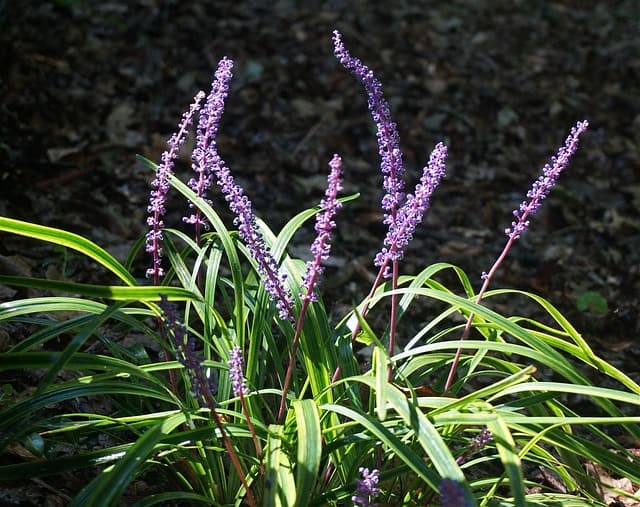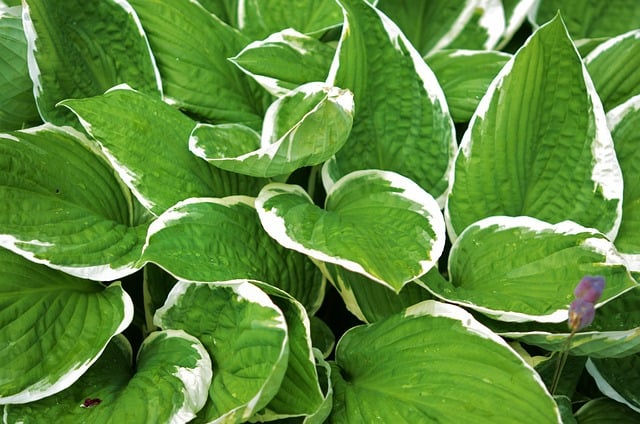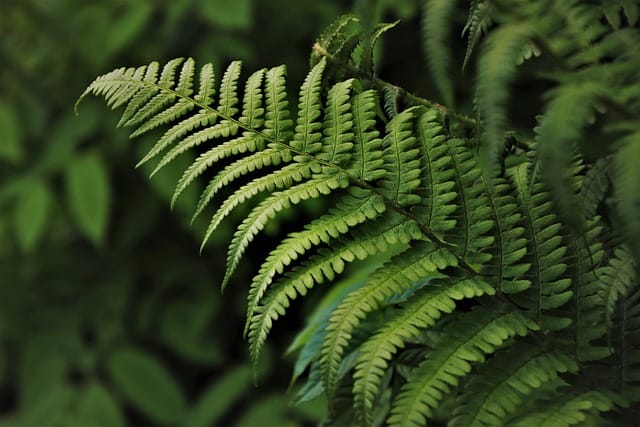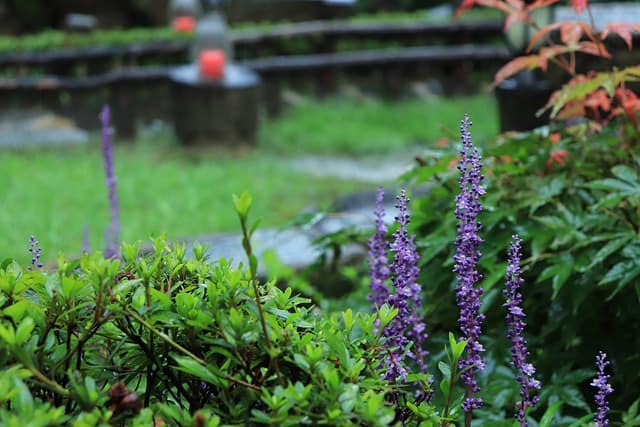Liriope makes for a beautiful alternative for grass, or a way to add some depth and uniqueness to a garden. Finding suitable liriope companion plants can transform your garden from ordinary to extraordinary, but which plants work best with this plant?
There are a couple of types of liriope you can plant in your garden, giving you quite a few opportunities to choose companion plants.
When selecting companion plants for liriope, consider options such as hostas, ferns, and heuchera, which not only complement its foliage and height but also thrive in similar growing conditions, creating a cohesive and visually appealing garden design.
This is one of many reasons why gardeners love having liriope; it also works as a border around other plants, keeping rabbits and deer away. It’s also very easy to care for, giving you time to focus on your peskier plants.
The versatility of liriope in both varieties ensures that, once you add your companion plant of choice, you’ll be blown away by the diversity and depth of your garden. Your garden will have dimension with plants of different heights and colors, making for a truly spectacular finished product to admire.
Liriope Companion Plants

Liriope is known under a few pseudonyms such as monkey grass or lilyturf. The two varieties of liriope also have their own nicknames;
Liriope muscari is known as big blue or giant lilyturf, while liriope spicata is known as creeping lilyturf or creeping liriope. No matter which type you plant, you’re getting a boisterous and lush plant that is easy to care for.
That said, your final choice in liriope companion plants will be somewhat dependent on which variety of plant you choose. This is because each has their own preference in what conditions they like to live in, though they are fairly adaptable plants when it comes to climate and moisture levels.
You’ll also want to keep in mind that this particular plant is a spreader, and so companion plants need to be able to grow quickly too.
This means you’ll want to have some space in your garden between your liriope and your companion plant of choice to ensure that your liriope doesn’t overpower the other plant in the garden or drain all of its needed resources.
Liriope muscari, or big blue, likes a decent amount of shade and either neutral or acidic soil conditions. For liriope spicata, or creeping lilyturf, it likes a little bit of shade and some fertile soil. You have excellent choices for each type of liriope, and you even have some choices that grow well with both types of liriope.
1. Geraniums
Geraniums can add a splash of color and vibrance when surrounding any type of liriope. You can get creative with how you plant these flowers based on how you want your garden to look.
It’s also advantageous to consider your locality’s climate when making your garden plans, as that can dictate how you plant your geraniums and which type you pick.
If you pick a geranium that likes sun, you may want to plant them near but not directly mixed into your liriope. The same is true if geraniums grow like perennials where you live.
If they can be grown as annuals, they look especially beautiful planted within liriope. Ivy geraniums, in particular, enjoy having a little bit of shade, as does liriope.
2. Hostas

Hostas make a lively addition to any garden. This popular plant comes in many different colors and styles, and can be grown nicely alongside any kind of liriope. Both plants add a lot of depth, a contrast of colors, and different shapes of large leaves that help to fill up a garden or create a nice border around one.
Even though hostas like sun and consistent moisture, these two plants can still live side by side. Any sunshine that the liriope doesn’t need will simply pass through its very small blades in order to go towards the hostas. If the liriope has had enough water, it’ll allow the hosta to get the remainder of what’s in the soil.
3. Blue Fescue
Blue fescue mimics liriope in some ways as they are boisterous and feature long, thin blades or leaves. Their leaves are a grayish-blue, complementing the green of liriope nicely.
Some blue fescue does grow with hints of green or yellow in its blades as well. This plant can grow to be somewhat tall, but doesn’t grow out as far horizontally as the liriope does.
These two types of grasses are both easy to maintain and have the ability to still survive in somewhat harsh conditions for a short time, such as if you forget to water them. The blue fescue prefers many of the same elements too, including the type of soil and sun or shade levels it thrives in.
4. Ferns

Ferns complement liriope very well in both the way they acclimate to similar conditions and the way they look. Ferns especially enjoy the same type of soil and moisture levels that liriope muscari likes, but that doesn’t mean it won’t survive in the conditions that liriope spicata like too.
This is because there are multiple varieties of ferns, each with their own preferences. For instance, a hard fern thrives under very similar conditions to liriope when it comes to elements like sun.
These two plants have different water and soil preferences but can still live together in a garden; they work well with each other to share resources so neither plant is deprived.
Also read: Orchid Leaves Turning Brown
Summary
Choosing which liriope companion plants get featured in your garden can be challenging, since you have many options. Just be sure that, when you make your choice, you consider the rest of your garden and how harmonious all of your chosen plants will be.
While liriope is an easy plant to care for, it doesn’t mean it doesn’t need any care at all. The benefits of liriope in or around your garden or yard are numerous, making it a plant that is both functional and beautiful.
Some people consider it invasive because of how it grows, but that growth can be managed. Liriope will complement its companion plants nicely, helping to fill your garden with vitality and dimension.
Frequently Asked Questions
What Can I Plant Next To Monkey Grass?
Monkey grass, also known as liriope, can be a plant that stands on its own and enhances any garden. That said, many types of plants complement monkey grass outside of companion plants, such as colorful flowers, tall grass, or even trees. It’s a truly versatile plant.
Above and beyond the various plants listed above, monkey grass can also thrive alongside lamium, spotted deadnettle, sedges, and perennials. That said, you want to plan out your garden carefully since monkey grass can spread and grow large, and end up overshadowing some smaller plants.
Should I Mulch Around Liriope?
It’s a good idea to mulch around your liriope so you can stop the growth of weeds that can slowly diminish the health of your plant. Mulch can also help maintain the integrity of your plant and the ground around it when it comes to regulating temperature and moisture levels.
Can Liriope Take Shade?
One of the many fantastic things about liriope is it can grow in versatile conditions, including both sun and shade. While this plant likes its sunshine, a few shady days will not cause it any harm. As long as it gets nourishment from the soil and plenty of water, your liriope will be happy.

Hey, I’m Lisa and I’ve been an avid gardener for over 30 years. I love writing, talking and living in the garden! Feel free to connect with me on my socials below

